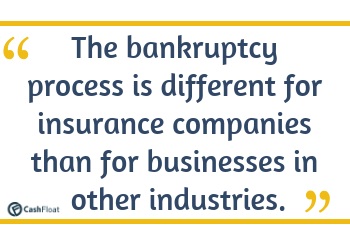Company Administration Explained: What Happens When Companies Go into Liquidation?
Company Administration Explained: What Happens When Companies Go into Liquidation?
Blog Article
Checking Out the Impact of a Business Entering Into Administration

Immediate Effect on Operations
When an organization goes into administration, the prompt impact on its procedures can be significant, influencing various elements of its functioning. Vendors and partners may come to be hesitant to involve with the organization, affecting the supply chain and possibly causing hold-ups or scarcities in vital sources.
Financially, the business might face constraints on its spending and investment choices, as managers take control to evaluate the circumstance and establish the best training course of action. This can lead to capital obstacles, making it difficult to fulfill commitments such as paying salaries or resolving invoices quickly - what happens when a company goes into administration. Additionally, the reputation of the service might endure, as information of management spreads, possibly leading to a loss of customer trust fund and commitment
Financial Implications for Stakeholders
The instant functional obstacles dealt with by a company getting in administration have considerable financial ramifications for stakeholders entailed in the company's affairs. On the other hand, customers might additionally be affected by an organization going into administration, dealing with disruptions in service, service warranty issues, or the loss of pre-paid solutions or down payments. These financial implications highlight the ripple impact that an organization entering administration can have on numerous stakeholders, underscoring the significance of aggressive risk administration and critical planning.
Legal Commitments and Responsibilities
Browsing the intricate web of legal responsibilities and duties is a crucial undertaking for all events included when a business enters administration. The administrators appointed to oversee the process have a duty to act in the very best passions of the creditors. They must follow lawful needs, such as preparing reports on the firm's financial circumstance and performing meetings with lenders to go over the management process.
Workers likewise have legal civil liberties that have to be promoted during administration. Depending on the scenarios, they may be entitled to redundancy pay, notification pay, and various other benefits. It is crucial for administrators to adhere to work legislations and guarantee that employees are dealt with relatively throughout the process.
Financial institutions play a substantial function in administration as well. They can be informed concerning the firm's monetary status, participate in creditors' meetings, and ballot on important decisions. Administrators should connect transparently with lenders and abide by lawful protocols to secure their rate of interests.
Prospective for Organization Restructuring
In the realm of business management, exploring the capacity for reorganizing holds considerable guarantee for revitalizing a battling business. When a business deals with financial distress or functional challenges, restructuring uses a strategic technique to address underlying problems and place the business for future success. By reassessing the organizational framework, functional processes, and monetary strategies, a company can apply modifications that enhance efficiency, minimize prices, and improve general efficiency.
One key aspect of organization restructuring is determining and resolving ineffectiveness within the company. This might involve improving processes, reallocating resources, or reassessing the services or product offering to far better align with market demands. Additionally, restructuring can include renegotiating agreements, debt responsibilities, or lease contracts to boost cash money circulation and reduce financial strain.
Moreover, restructuring offers a chance to examine management duties, responsibilities, and decision-making processes to guarantee efficient governance and accountability. By executing a well-thought-out restructuring plan, a company can navigate challenging times and emerge stronger and extra resistant in the affordable market landscape.

Implications for Sector and Market
Considering the more comprehensive implications for sector and market characteristics, it becomes noticeable that a company going through restructuring can activate causal sequences that reverberate throughout the affordable landscape. When a firm goes into administration, it can cause boosted competition as various other firms look for to fill deep space left by the struggling organization. This increased competitors can result in rate wars, development drives, or mergings and purchases as firms jostle for market share.
In addition, the collapse of an organization can also impact vendors and partners within the sector - company administration uk. Suppliers might face payment hold-ups or perhaps defaults, affecting their own economic stability. Collaborations that were reliant on the now-struggling company might need to be reviewed or renegotiated, leading to further disturbances out there ecosystem
Final Thought

When an organization goes into administration, the instant impact on its procedures can be significant, impacting numerous facets of its functioning.The prompt functional challenges encountered by a company getting in administration have considerable economic ramifications for stakeholders entailed in the company's events (what does it mean to go into administration). These financial implications highlight the surge effect that an organization entering administration can have on numerous stakeholders, underscoring the value of aggressive risk management and tactical preparation
When a company goes into administration, it can lead to increased competitors as various other companies seek to fill up the void left by the struggling business.In verdict, the influence of a business going into administration is considerable, impacting procedures, funds, lawful commitments, and potentially leading to restructuring.
Report this page